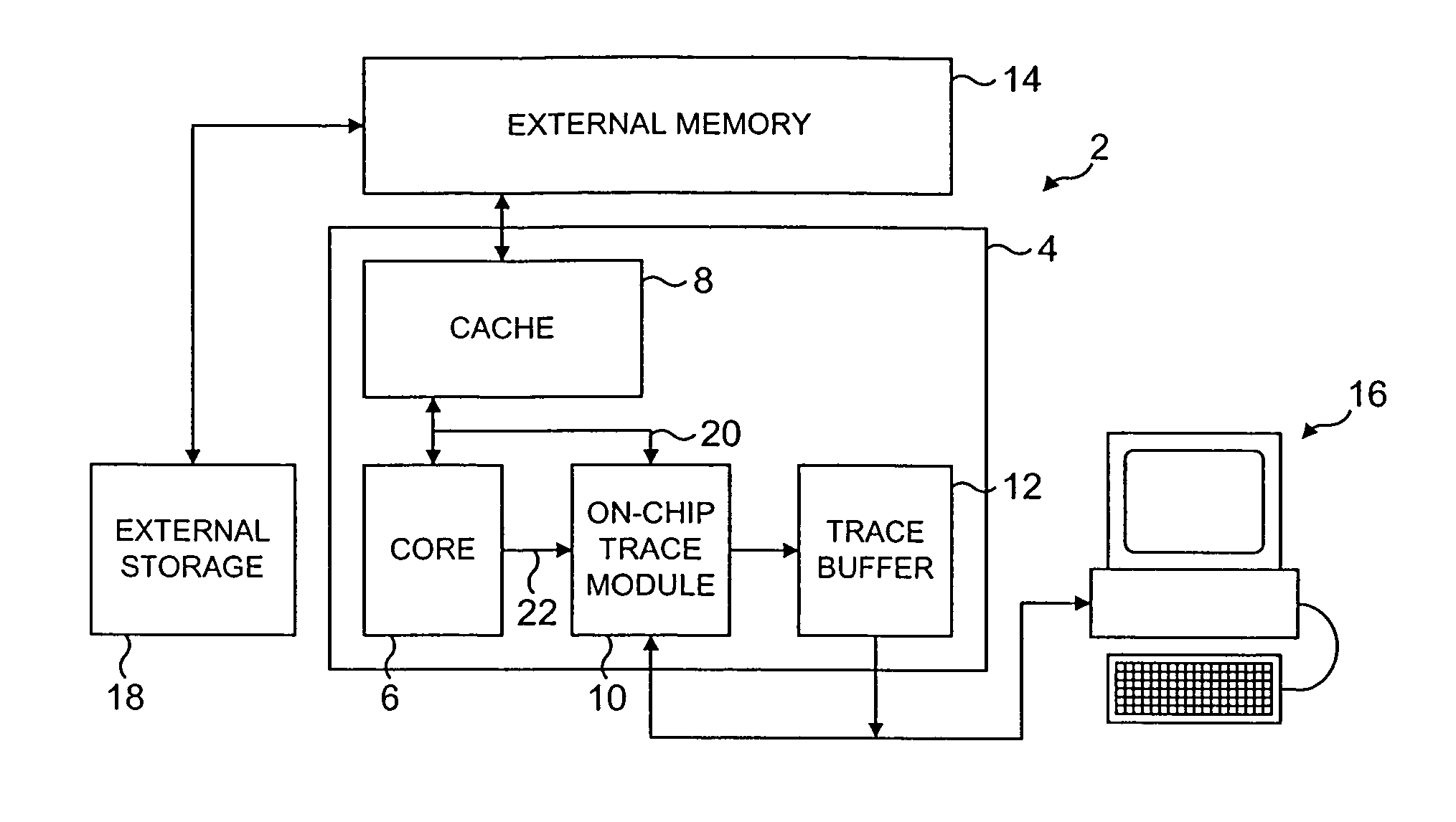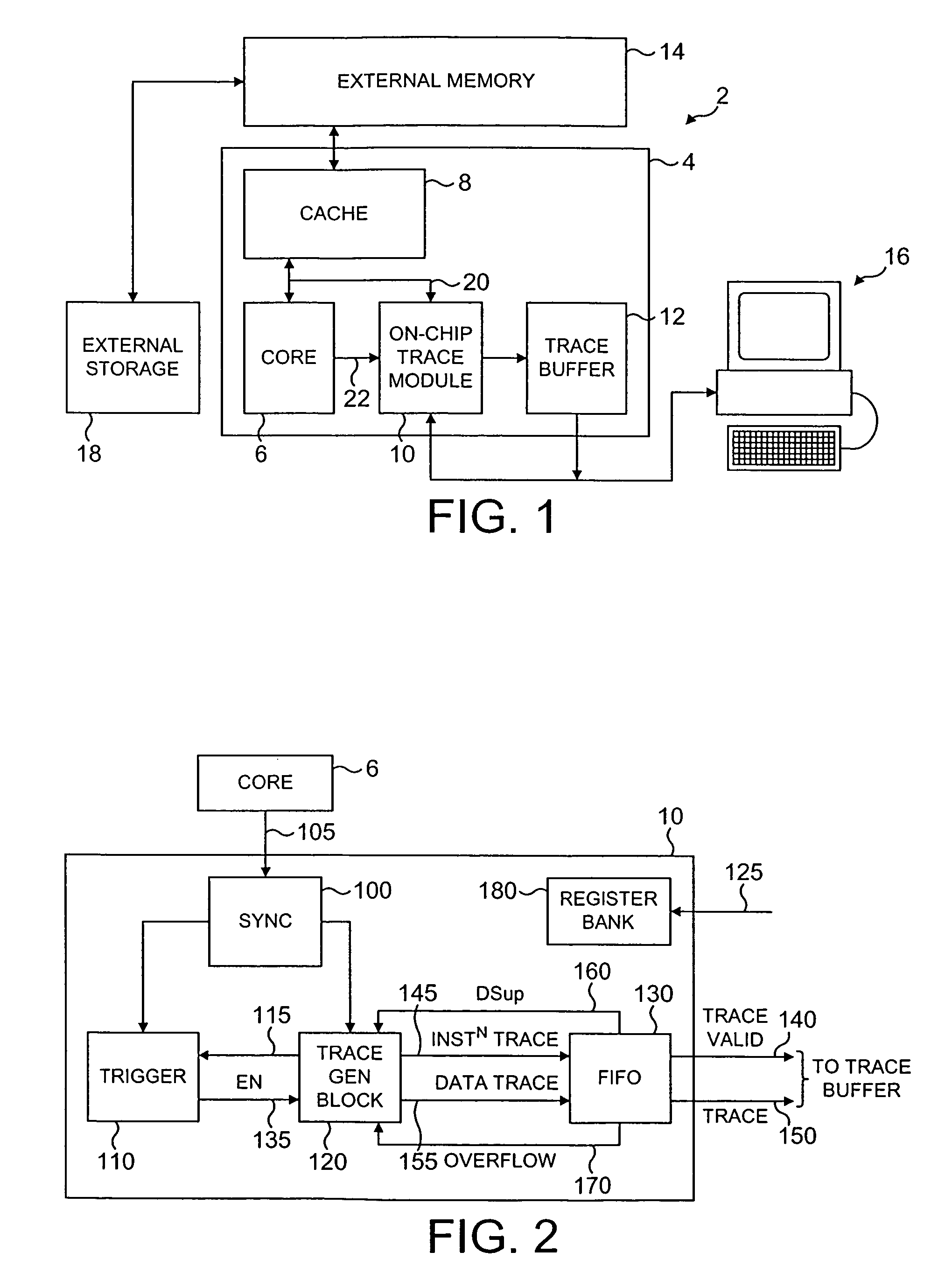Generation of trace signals within a data processing apparatus
a data processing apparatus and trace signal technology, applied in the direction of detecting faulty computer hardware, specific program execution arrangements, transmission, etc., can solve the problem of increasing the complexity of processing systems, unable to track the state of processor cores via externally accessible pins, and potentially a very large amount of information that could be traced
- Summary
- Abstract
- Description
- Claims
- Application Information
AI Technical Summary
Benefits of technology
Problems solved by technology
Method used
Image
Examples
Embodiment Construction
[0052]FIG. 1 schematically illustrates a data processing system 2 providing an on-chip tracing mechanism. An integrated circuit 4 includes a microprocessor core 6, a cache memory 8, an on-chip trace module 10 and an on-chip trace buffer 12. The integrated circuit 4 is connected to an external memory 14 which is accessed when a cache miss occurs within the cache memory 8. A general purpose computer 16 is coupled to the on-chip trace module 10 and the on-chip trace buffer 12 and serves to recover and analyse a stream of tracing data from these elements using software executing upon the general purpose computer 16.
[0053]It is often the case that the processor core 6 may, during operation, need to access more data processing instructions and data than there is actually space for in the external memory 14. For example, the external memory 14 may have a size of 1 MB, whereas the processor core 6 might typically be able to specify 32-bit addresses, thereby enabling 4 GB of instructions and...
PUM
 Login to View More
Login to View More Abstract
Description
Claims
Application Information
 Login to View More
Login to View More - R&D
- Intellectual Property
- Life Sciences
- Materials
- Tech Scout
- Unparalleled Data Quality
- Higher Quality Content
- 60% Fewer Hallucinations
Browse by: Latest US Patents, China's latest patents, Technical Efficacy Thesaurus, Application Domain, Technology Topic, Popular Technical Reports.
© 2025 PatSnap. All rights reserved.Legal|Privacy policy|Modern Slavery Act Transparency Statement|Sitemap|About US| Contact US: help@patsnap.com



